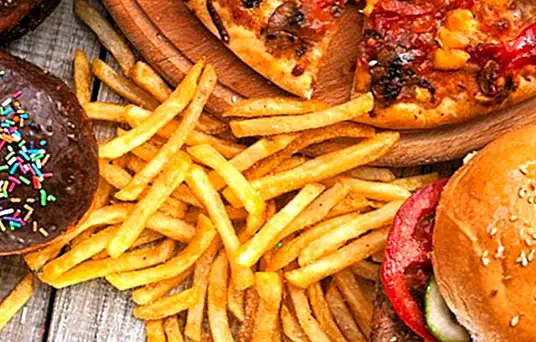How to know if you have gallstones: common symptoms
The gallbladder It consists of a small bag-shaped organ that we find below the liver. As a main function is responsible for storing bile, an indispensable and necessary liquid for our digestion. It is connected-through a duct known as a cystic duct-to another duct called a common bile duct, which comes from the liver, where bile has just formed and then flows into the small intestine. About its functioning, it is very interesting to know that, every time we eat, the bladder contracts in order to eliminate bile, facilitating digestion and helping in the process of absorption of the different nutrients that we have obtained from food consumed in the diet.
Among the problems or conditions that most often tend to affect the gallbladder, we find three common conditions, all of them related to each other. On the one hand we find the one known as cholelithiasis, which consists of the formation of stones in the gallbladder, either cholesterol or bilirubin. These stones can clog the cystic duct and cause inflammation of the gallbladder. When infection and inflammation occurs it is known by the name of cholecystitis, whereas if any of those stones comes out of the gallbladder and obstructs the duct that comes from the liver it is known as choledocholithiasis. It is also very common for these stones to cause inflammation of the pancreas, which is medically known by the name of pancreatitis.

But they are not the only problems that affect the gallbladder. It is also possible to find the presence of polyps, which can increase in size until the moment of abdominal discomfort, or even present the risk of becoming malignant.
Symptoms of stones in the gallbladder
We must bear in mind that a stone in the gallbladder may not cause symptoms or present, however, tremendously painful episodes. It is what is medically known as biliary colic, and its associated symptoms usually occur especially when the stones move from the gallbladder to the bile ducts.
Precisely, it is when the stones do not dissolve when, with the passage of time, they tend to affect not only the gallbladder itself, but also the liver and pancreas. However, in most cases gallstones tend to dissolve spontaneously and without presenting any symptoms.

But when it does not happen, and they do not dissolve, they are usually the cause of huge painful attacks, hence it is useful to attend to What are the main symptoms of gallstones? to attend - and keep in mind - its possible signals:
Abdominal pain
It is very common when there are stones in the gallbladder. In fact it is very usual that The abdominal pain is located at the level of the right upper abdomen, which can in turn become Back pain or of shoulders Y pain in the sternum.
In general, abdominal pain tends to feel very intense, reaching precisely to be tremendously painful.
Bad digestion
Not only heavy digestion or poor digestion, but also when there are stones in the gallbladder that cause problems tend to influence all its related symptoms: the gases and flatulence, the heavy digestion and the feeling of having a stomach or a swollen belly, especially after having Eaten.
Nausea, dizziness and vomiting
It is very common that, in addition to heavy digestion or poor digestion, other related symptoms appear, as is the case nausea, vomiting and dizziness. In fact, they become three of the most common major symptoms, along with abdominal pain.
Fever
It is usually a fever not very high, although it tends to arise especially when there is infection-inflammation.
Pancreatitis
It occurs when the bile and hepatic ducts are blocked, so that the stone blocks the exit of the pancreatic juices. As a result, this is released in the pancreas itself, causing damage to the organ and causing its inflammation, which can seriously injure the organ.
What should I do if I have any gallbladder symptoms?
In the presence of any pain in the upper right hemiabdomen, especially when it is associated with nausea, vomiting or fever, are sufficient symptoms to go to the doctor in order to rule out the presence of stones in the gallbladder. Unless, of course, the symptoms are even worse and there are major attacks of colic, with which the basic recommendation is to go to the emergency room quickly.
We must bear in mind that, although it is not a serious medical condition, it can be very painful and in the long run cause problems, especially if these calculations obstruct the bile duct or the liver. Therefore, it is not at all advisable to ignore the symptoms of our body, especially if some of these signs could be indicating the possible existence of stones in the gallbladder.
Images | roblan / piotr_marcinski This article is published for informational purposes only. It can not and should not replace the consultation with a Physician. We advise you to consult your Trusted Doctor. ThemesGallbladder


